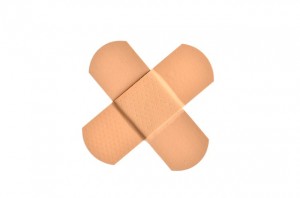Football Season is Here
The season is upon us. Yes, ladies and gentlemen, it’s football season. The time of year where you can lose more friends than in an election year. So with that said, 2016 may be an interesting year. Let’s call 2017 the year of reconciliations.
If you are an athlete, football season can be grueling and can wear you down. If you are a coach, it can do the same thing. If you are a parent…well, parents have it easy. All you have to do is print out this article, tape it to the fridge, and your young athlete will follow all 5 tips, right?
The goal of this quick article is to give the athletes 5 tips to a healthy football season and give coaches some things to harp on with your athletes. In a loving way, of course.
5 Tips to Having a Healthy Football Season
Tip #1: Nutrition
Eating “properly” for performance is a year long struggle for the young athlete and can get even more difficult during football season. One of the hardest goals to meet is getting the calories an athlete needs to perform. With lunch around noon and practice after school, kids can go 6-7 hours without eating in the afternoon.
Pro Tip: Bringing snacks to school is important to fill those huge gaps in the day. But don’t forget, breakfast is the most important meal of the day. Don’t skip it.
Tip #2: Strength Train
If we work hard in the off-season, why lose all those “GAINS” during the season? Yea, I know, “I don’t have any time” or “we gotta spend that time watching film” is a common reason for skipping strength training. Time can be of the essence, but 2 days a week minimum is a must! Get into the weight room.
Pro Tip: The main goal in-season is to combat muscular imbalances that are caused by the season which CAN help prevent injuries. Oh yea, athletes CAN get stronger in-season! Don’t skip out on strength training during the season. Your off-season will thank you!
Tip #3: Sleep
You know what? I love video games too! I think it’s important to have fun with friends but don’t let it affect the season. Athletes need 8-9+ hours of sleep each night so the body can repair itself. Period.
Tip #4: Injuries
This is a big one for highly motivated athletes. Nobody likes to be hurt and miss games. But that slightly rolled ankle can quickly turn into a season ending injury if not treated correctly. There is a big difference between some bumps and bruises and an injury that can lead to something more serious.
Pro Tip: Maintain a good working relationship with ATC’s and make sure injuries are discussed.
Tip #5: Academics
Poor academics can lead to ZERO play time. Make school work a priority. Time management is one of the skills athletes will need to learn as a student athlete.
Pro Tip: Take advantage of free time. Use study hall for studying and homework (obviously), and use bus rides for the same thing. Being an athlete is work!
Have a Productive Football Season
Parents, I hope this is “fridge worthy”. Coaches, keep these tips in the front of your mind when it comes to your athletes. I hope that your football athletes will use these 5 tips to have a healthy and productive football season.
Josh Ortegon
About the Author: Josh Ortegon
 Joshua Ortegon is co-founder and the Director of Sports Performance Enhancement at Athlete’s Arena in Irmo, SC. Joshua earned his Bachelor of Science degree in Exercise Science from Western Michigan University in 2000.
Joshua Ortegon is co-founder and the Director of Sports Performance Enhancement at Athlete’s Arena in Irmo, SC. Joshua earned his Bachelor of Science degree in Exercise Science from Western Michigan University in 2000.
As an IYCA-certified High School Strength and Conditioning Specialist, speaker, and writer, Joshua has helped establish Athlete’s Arena as the premier high-performance center in South Carolina since 2005.
Joshua has worked with a wide range of athletes from youth to professionals specializing in the areas of injury prevention, return to play and performance enhancement.

 My second severe injury took place months before fulfilling my childhood dream of playing college football. After finishing a rep of power cleans, I lowered the barbell loaded with 265 lbs to the ground instead of just dropping it. Poor choice and form. I felt a pop in my lower back.
My second severe injury took place months before fulfilling my childhood dream of playing college football. After finishing a rep of power cleans, I lowered the barbell loaded with 265 lbs to the ground instead of just dropping it. Poor choice and form. I felt a pop in my lower back.  Brady Poppinga played in the NFL for eight seasons (2005 to 2010 Green Bay Packers, 2011 St. Louis Rams and 2012 Dallas Cowboys). Brady is a member of the 2010 Green Bay Packers Super Bowl championship team. After retiring from the NFL over three years ago Brady has reinvented himself as an inventor of the worlds first
Brady Poppinga played in the NFL for eight seasons (2005 to 2010 Green Bay Packers, 2011 St. Louis Rams and 2012 Dallas Cowboys). Brady is a member of the 2010 Green Bay Packers Super Bowl championship team. After retiring from the NFL over three years ago Brady has reinvented himself as an inventor of the worlds first 



